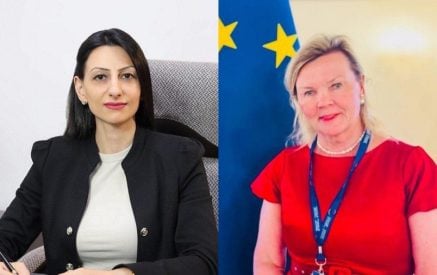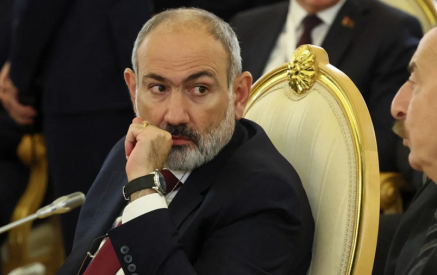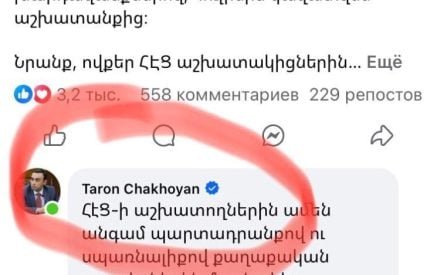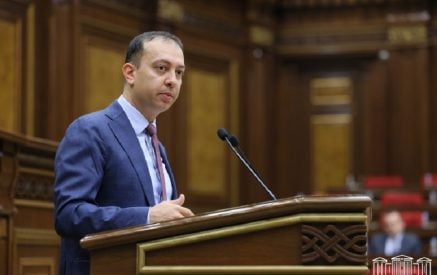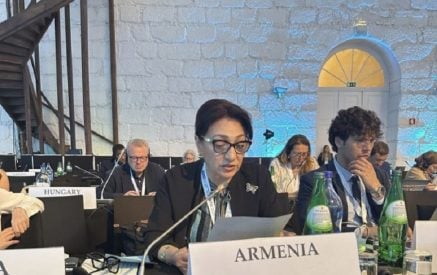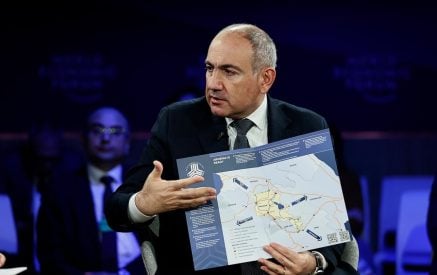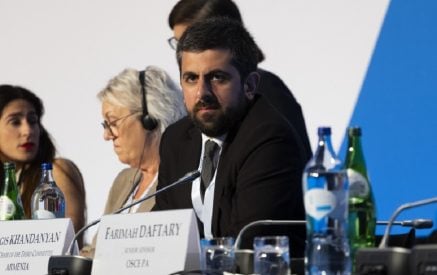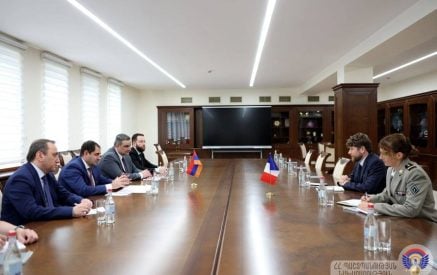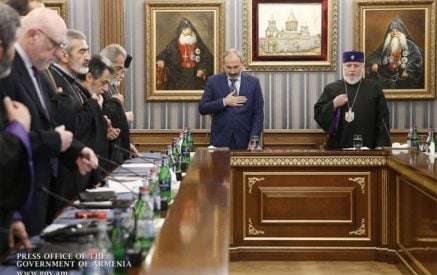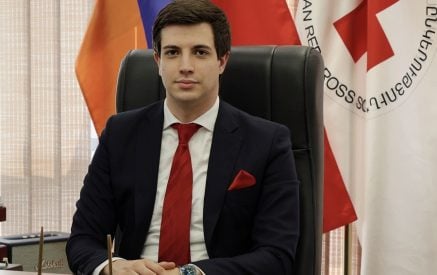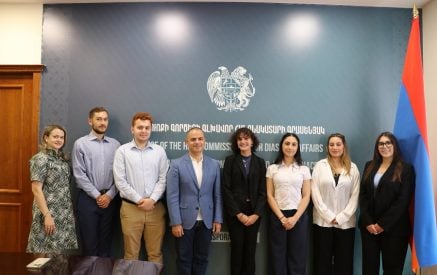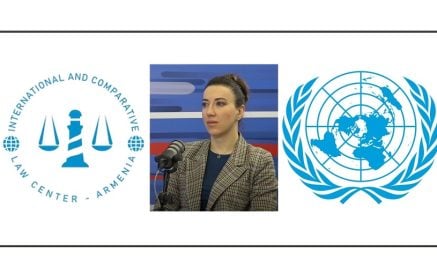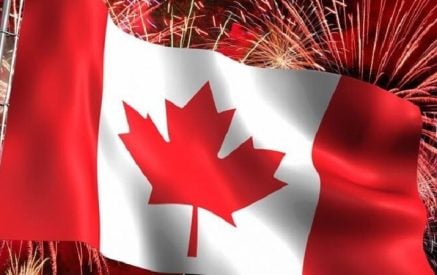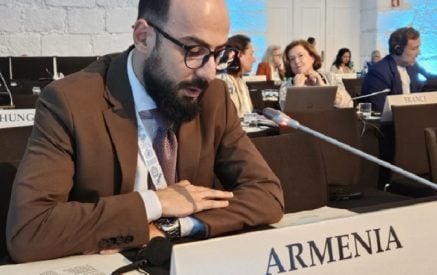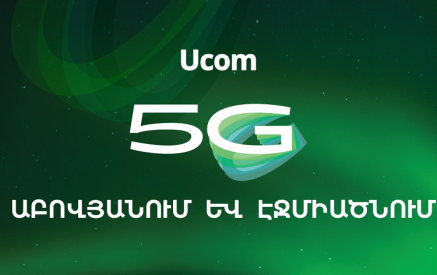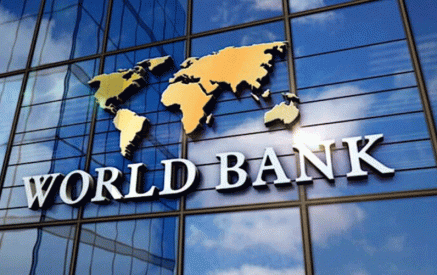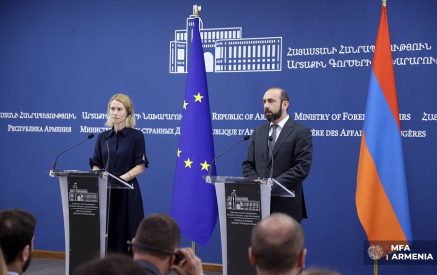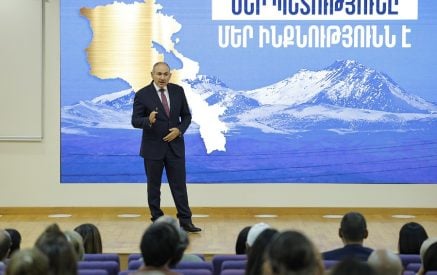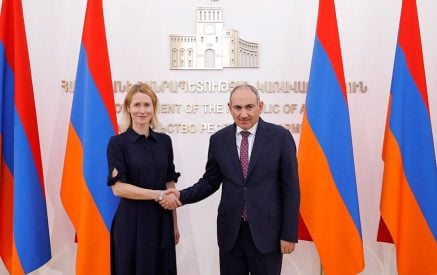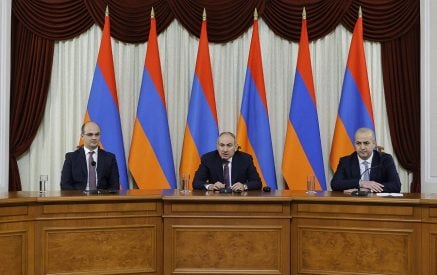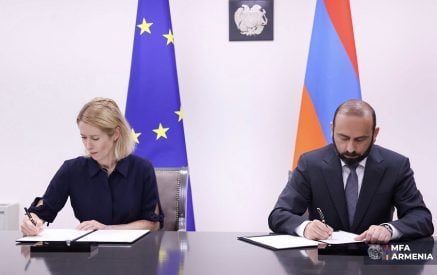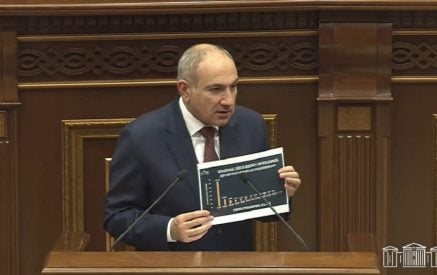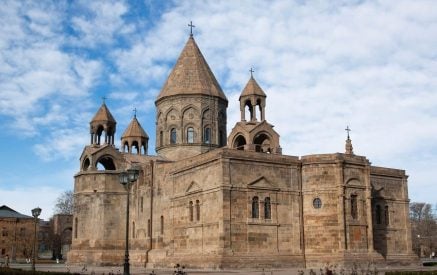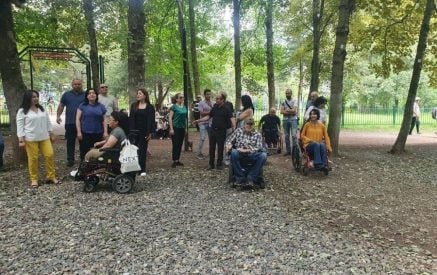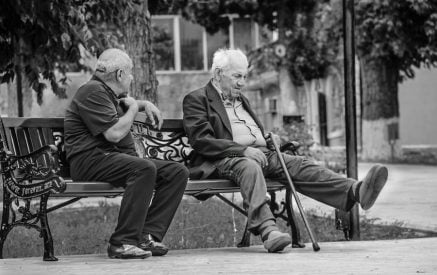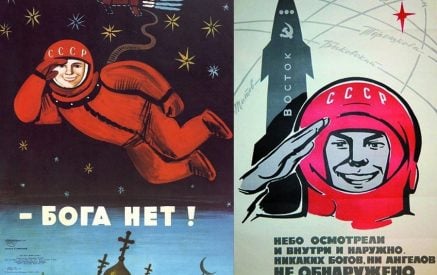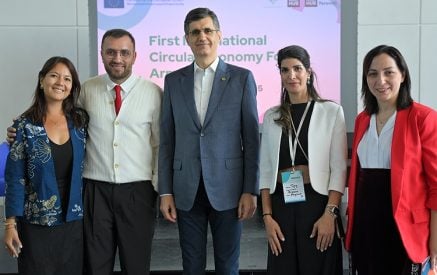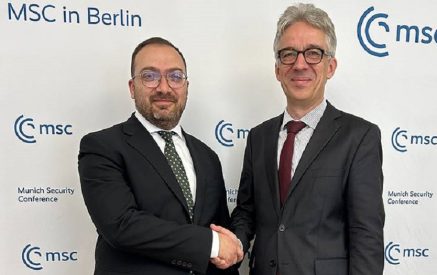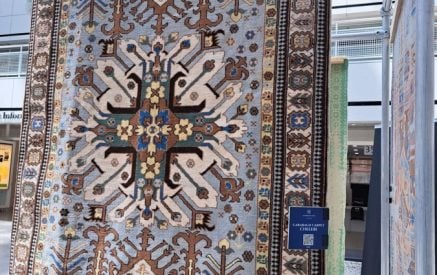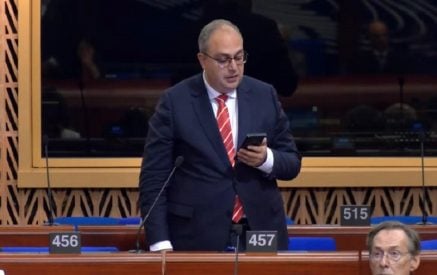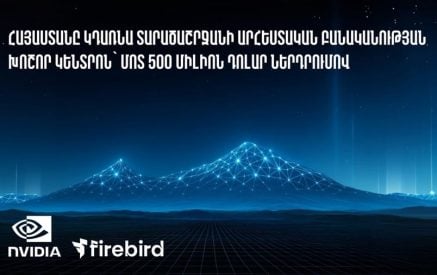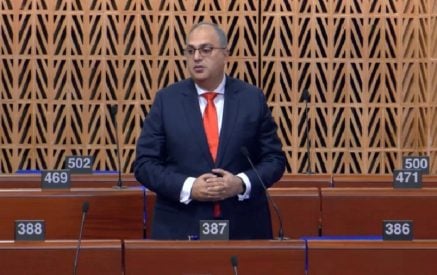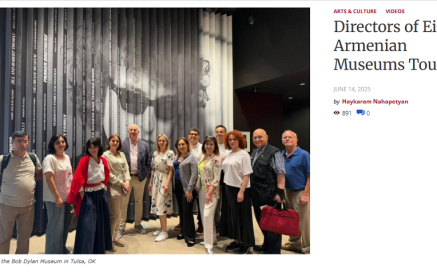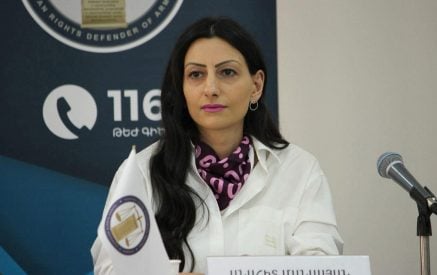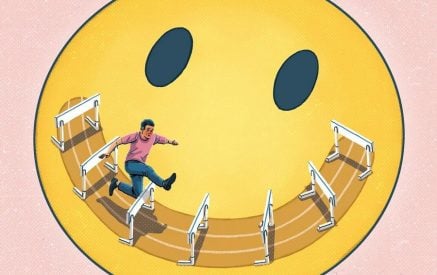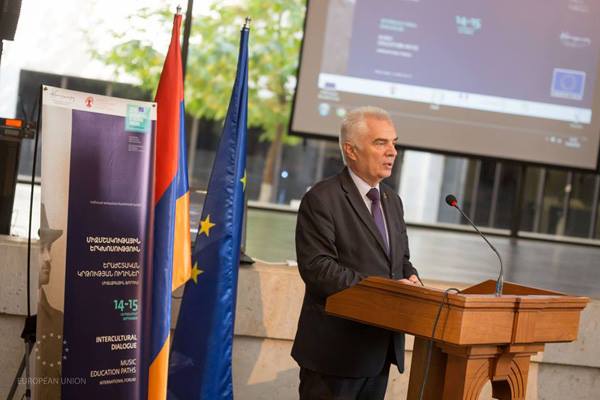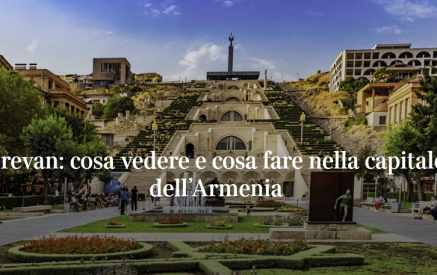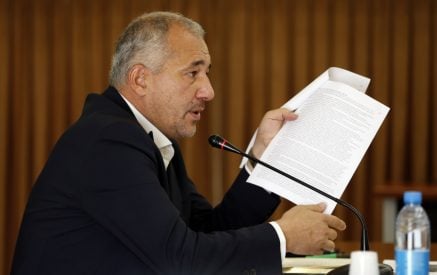Interview with the Head of EU Delegation to Armenia, Extraordinary and Plenipotentiary Ambassador Piotr Antoni Świtalski
– Mr. Ambassador, you started your mission in Armenia in 2015. What are your impressions of Yerevan, have you noticed any positive or negative change?
– Yerevan is a very lively city. It’s full of life, full of energy. In this sense it is very European. We, people working for the European Union, have this feeling that we are at home. Yerevan is getting richer every year. You can see very positive changes every year, in particular, the number of restaurants, cafes. The number of good places for leisure is growing. It’s very diverse, and very rich. Many European cities can envy Armenians for this type of diversity. The cultural life is very rich with a lot of concerts, in particular philharmonic concerts, opera performances, theatres. This is something really impressive.
Of course, we understand that like every city Yerevan has its problems. There are issues to be solved, to be tackled. If you ask me, what I miss in Yerevan, I miss bike routes, city bikes. If you want to make Yerevan look more Western and more European, invest in bike infrastructure. It’s very trendy in all cities, even in the biggest, even in New York. Bike routes, city bikes are something that make cities more environment-friendly and life is getting healthier. You create good conditions in particular for young people to move to the city in a sporty atmosphere. So, we need more sports infrastructure, in particular, mass sports infrastructure. This is something that I miss in Yerevan.
– What are the projects of the European Union implemented together with Yerevan Municipality?
– At first let me tell you that I am happy to give this interview about the EU projects for Yerevan, which is celebrating it’s 2800 anniversary this year. Yerevan is a city older than Rome, which should make Armenians very proud. These celebrations are another occasion to show the rich tradition, legacy of the Armenian identity. The city of Yerevan should be considered as one of the cradles of Western European civilization. If you take the archeological sites Erebuni, Medzamor or Dvin they testify, indeed, Yerevan was a place which could be called the crossroads of cultural exchanges. It was one of the cradles of our human civilization. You can find the continuity of the settlement, the current continuity on civilizational life throughout centuries and influences coming from different sides. In Erebuni, Medzamor and Dvin you can see artifacts from Africa, from the Middle East, from Asia, from the Far East, from the North, from Anatolia, from what we call now Europe. That’s very remarkable. Nowhere else such richness of artifacts can be found, as here in Yerevan and the surroundings.
The European Union is very committed to the improvement of the lives of the ordinary Yerevantsiner [residents of Yerevan]. Given this occasion, I want to talk about the big projects that the European Union is financing in Yerevan. We have now three, what we consider, flagship projects for Yerevan. The first project is the Solid Waste Management, including a new site for solid waste. I think it is very important for Yerevan. Everybody, who is passing the old site, can understand the gravity of the problem for the environment, for the quality of life, in particular, in the nearby apartments and buildings. Yerevan Solid Waste Project has a value of EUR 35 000 000 and these are grants from 2 European banks: EBRD (European Bank for Reconstruction and Development) and European Investment Bank (EIB), which is the bank of the European Union, plus a grant from the European Union.
The second flagship project for Yerevan is Yerevan Street Lighting Project implemented through the contributions again from the European Bank for Reconstruction and Development and the Municipality of Yerevan, with a total cost of almost EUR 7 000 000. The third flagship project is Yerevan Energy Efficiency in Public Buildings; all a loan from the European Investment Bank with a total cost of EUR 15 000 000. Quite recently these three projects were discussed in a format of a steering committee, and we understand that there are some delays, which we hope very much will be addressed properly, because this is something very important for the ordinary citizens. We would like ordinary citizens to feel the benefits of these big projects as soon as possible. Unfortunately, with the exception of the Energy Efficiency, the other two projects are experiencing some delays. I mention, because now we count on the new administration of Yerevan to move these projects forward after the elections. The new Armenia needs a better record in terms of implementing big infrastructure projects. We are not satisfied with what has been the case before: the long period of implementation, the delayed period of implementation. But speaking about these three very important projects, I think, in particular, Yerevan Street Lighting and Solid Waste Management projects are very important, because they make the city look different. There are also other projects, where the European Union has invested. What comes first is the metro. The European Union has invested a lot in the past in modernizing the functioning of the metro. You can see on some of the carriages the European Union logo. These are probably the only places where you can see the European Union logo in Yerevan. We are now in the second phase of the metro modernization. The total budget for Yerevan Metro Rehabilitation Phase II is EUR 17 000 000 a loan from EIB, a loan from EBRD and a grant from the European Union. So, this is again a big project, again a little bit delayed, but we hope very much that we are making a good contribution.
I will not mention other projects, smaller projects, but if you add these figures, and they are huge figures, they show the strong commitment of the European Union to improve the life of the city of Yerevan.
– Are you satisfied with the implementation and outcome of the EU projects?
– Now we have a possibility to review critically what the European Union has been doing before and what should be doing now after the revolution. We are very much interested in improving the benefits of our activities for ordinary Armenians. If you ask me about the picture of the past I think that there are very tangible results of our activities in Armenia. Let me repeat that we have already contributed to Armenia in the past 20 years overall more than half a billion Euros in grants. There are concrete things that we can touch, we can see, that are the legacy of our activities. But of course, we are not fully satisfied. There are several aspects that should be addressed. One I already touched upon – the long period of implementing our projects. The average time for implementing projects in Armenia is eight years. This is one of the slowest rates in the whole Eastern Partnership area. This is something that we speak about with government to improve the brand of Armenia. We have to look at the possibility to speed up the implementation of projects. We understand why this period is so long, because it is mainly about infrastructure. I talked about the infrastructure projects in Armenia. Of course, it takes time. All infrastructure projects require more time, but the general challenge for us, meaning not the European Union, but Armenian partner, to shorten the average time for implementing the projects.
The second issue is to better use the resources allocated for Armenia within the so-called budget support framework. What is budget support? We don’t use this term anymore. Now we talk about Sectoral Reform Activities, which means that we conclude a contract with the government, where we support reforms in a given area. We financially support the government to implement reforms. Unfortunately, in the past, a lot of money allocated for Armenia was not used, because Armenia failed to implement the benchmarks in time. Because what is important is that these benchmarks, according to our contracts, should be implemented in prescribed time. Due to this long implementation, Armenia was losing the money it was entitled to. Now we are discussing with the new government procedures, which would prevent a situation, where Armenia cannot profit from the money allocated to it, because of the slow phase of implementing these benchmarks.
There are some examples from the past. For instance, if you take the money allocated to Armenia for the fight against corruption more than 50% of this money was not disbursed for Armenia, because Armenia was not able to cope with these benchmarks in the prescribed time. There are other cases where, unfortunately, Armenia was not able to benefit from the funds. Now we want to change it. I think our discussions with the new government are on good track to prevent the loss of money. So, as I mentioned there are several aspects that we have to improve: first is to shorten the period of the implementation, in particular, of big investment projects, second to improve the implementation of Sectoral Reform Programmes, the third is to better use the possibilities of regional funds, which are managed centrally from Brussels. Most of these regional funds are allocated on a competitive basis, which means Armenia, as one of the Eastern Partnership countries, is competing for money with other countries. If other countries prepare better projects, better ideas, they take the money, not Armenia. We see a lot of possibilities for Armenia to improve the competitiveness of its projects vis-à-vis other Eastern Partnership countries.
The fourth element is of course to make a contribution more targeted to the needs of the Armenian people. There we have to increase our dialogue with civil society, with ordinary Armenians. The normal way for us to do business is to sit together with the government representatives and to agree with them, where we should channel our support. Now we want to be more open to the ideas and expectations of the ordinary Armenians, because, in particular in remote places they know better what’s the best use of donor’s money and they know better how to spend this money. So, now we have a big challenge to improve the effectiveness of the EU contribution to the development of Armenia. The strategic challenge is to turn Armenia into an attractive brand now, as a partner for cooperation with the European Union. If Armenia can create positive, exemplary brand as our partner it may be eligible for much bigger resources in the coming financial framework, because next year the European Union will start discussing a new multiannual financial framework starting from 2021 extending to 2028. If Armenia can create such a good brand, Armenia can benefit even more from the European Union support. We are not imposing ourselves, of course, a lot depends from the Armenians, but definitely, a country, which can show that it can use the money for good purposes, in an efficient way, without corruption, where citizens can really feel a difference, it helps.
Another important aspect is of course visibility. The European Union cares about the visibility of its contribution. How many European Union flags can you see in Yerevan? Even in terms of topography, Europe is not on the map of Yerevan. Russia, Uruguay, Italy, France, India, they have their own streets or squares. Europe doesn’t have here a small street unlike in other Eastern Partnership capitals, unlike in Gyumri, where there is a square of Europe. On the topography of Yerevan there is no Europe in the spot.
We are looking forward to worke with the new municipality. I believe the elections to the new city council were very important. These elections were not observed or monitored by the international observers. Therefore we, as the European Union, cannot rely on a formal report of the Council of Europe or the OSCE. But as judged by the reactions of political contenders, these were very quiet elections, very orderly elections and there were, of course, some irregularities reported. I personally talked to the Human Rights Defender and asked his opinion. Even bearing in mind that there were complaints and signals about irregularities, I believe the overall feeling was that this was an unprecedented fair and free election in Yerevan. So, the new Municipality has a very strong legitimacy, and we are ready to work with the new Municipality to advance the development of Yerevan.
– What is your vision of Yerevan?
– My vision of Yerevan is a strong, regional hub city, which is radiating to the neighboring regions through culture, through education, through new technologies. Yerevan has all the assets to be a regional hub. There is, of course, a problem that due to the closed borders, landlocked situation of Armenia, one can say that there are limitations. However, in the 21st century, where technology takes precedence over geography, you can develop a brand for Yerevan as a regional hub, in particular, where human capital is the main argument. What are the areas? It’s exactly culture, because it’s about creativity, art, and Armenia has a very strong potential regionally. It’s about education, because, if Armenians can create strong educational institutions, there will be a magnetic force for other people from all direction of the region – South, East, West, North. Strong educational institutions always bring people from the outside and boost the economy. Thirdly – it’s IT, i.e. new technologies. I don’t want to say that Armenia is a place to develop a new Silicon Valley. but if Yerevan can create a brand of a place for regional startups, in particular in new technologies in different fields, there could be already something. I can see the potential. If you look around the whole region – North, East, South, West, Armenians are the most comfortable with the new technologies: they invest new technologies, they are Facebook people compared to other countries. When we are talking about Eastern Partnership countries or former Soviet republics, the social network literacy in Armenia is the highest, and these are objective figures. These are the strong points of Armenia. So, yes, I see a potential, but you need a good system of governance, corruption free, based on meritocracy and not nepotism, openness and open attitude to the outside world, seeing the outside world, as an opportunity and not a threat, and so on and so forth. With the changes in Armenia that happened in April, I can look into the future with optimism. If you make this revolution work, if you succeed, you can turn Yerevan into a strong regional hub, where borders will not matter, being landlocked will not matter so much, because what matters in the 21st century – creativity, innovation, brains, and Armenia has plenty of it.


